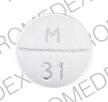Mebaral Interactions
There are 572 drugs known to interact with Mebaral (mephobarbital), along with 13 disease interactions, and 1 alcohol/food interaction. Of the total drug interactions, 37 are major, 508 are moderate, and 27 are minor.
- View all 572 medications that may interact with Mebaral
- View Mebaral alcohol/food interactions (1)
- View Mebaral disease interactions (13)
Most frequently checked interactions
View interaction reports for Mebaral (mephobarbital) and the medicines listed below.
- Abilify (aripiprazole)
- atenolol
- Ativan (lorazepam)
- Bentyl (dicyclomine)
- Butisol Sodium (butabarbital)
- carbamazepine
- Celexa (citalopram)
- clonazepam
- clonidine
- cyclobenzaprine
- Dantrium (dantrolene)
- Depakote ER (divalproex sodium)
- Depakote Sprinkles (divalproex sodium)
- Diacomit (stiripentol)
- Dilantin (phenytoin)
- doxycycline
- fluticasone nasal
- Geodon (ziprasidone)
- Hismanal (astemizole)
- hydroxyzine
- Keppra (levetiracetam)
- Klonopin (clonazepam)
- Lipitor (atorvastatin)
- Lomotil (atropine / diphenoxylate)
- Mysoline (primidone)
- phenobarbital
- Risperdal (risperidone)
- Tegretol (carbamazepine)
- trazodone
- Zoloft (sertraline)
Mebaral alcohol/food interactions
There is 1 alcohol/food interaction with Mebaral (mephobarbital).
Mebaral disease interactions
There are 13 disease interactions with Mebaral (mephobarbital) which include:
- acute alcohol intoxication
- drug dependence
- liver disease
- porphyria
- rash
- respiratory depression
- renal dysfunction
- suicidal tendency
- adrenal insufficiency
- depression
- hematologic toxicity
- osteomalacia
- paradoxical reactions
More about Mebaral (mephobarbital)
- Compare alternatives
- Reviews (4)
- Drug images
- Side effects
- Dosage information
- During pregnancy
- Drug class: barbiturate anticonvulsants
Related treatment guides
Drug Interaction Classification
| Highly clinically significant. Avoid combinations; the risk of the interaction outweighs the benefit. | |
| Moderately clinically significant. Usually avoid combinations; use it only under special circumstances. | |
| Minimally clinically significant. Minimize risk; assess risk and consider an alternative drug, take steps to circumvent the interaction risk and/or institute a monitoring plan. | |
| No interaction information available. |
See also:
Further information
Always consult your healthcare provider to ensure the information displayed on this page applies to your personal circumstances.


